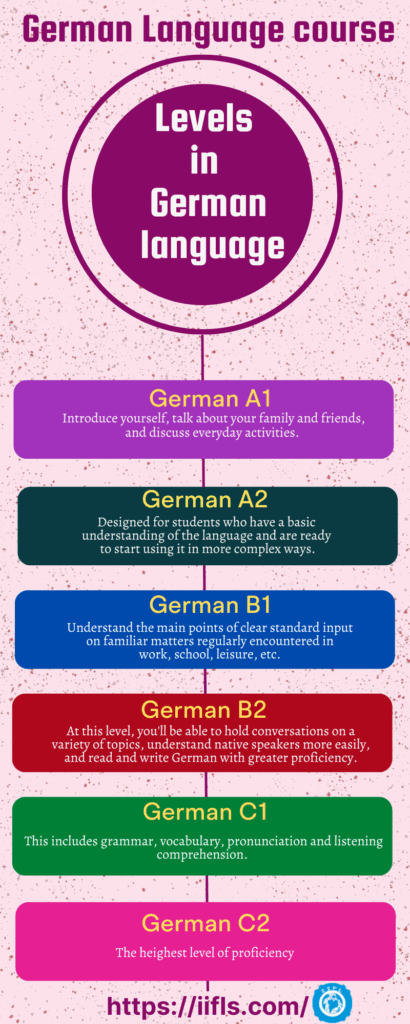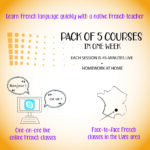I remember a time, not so long ago, when the idea of speaking German felt like trying to scale Mount Everest in flip-flops. It was a language that sounded formidable, full of long words and what I imagined to be impossibly complicated grammar. Yet, there was always a tiny spark of curiosity within me. Maybe it was the allure of Bavarian castles, the thought of ordering a Bratwurst in Berlin, or simply the challenge of learning something completely new. Whatever it was, that spark eventually ignited into a full-blown mission: I was going to learn German. And it all started with finding the right German course.
You might be wondering, "Why a course? Can’t I just use apps?" And believe me, I asked myself the same question. But I knew my own learning style. I needed structure, accountability, and the human connection that only a live instructor and classmates could provide. This isn’t just a guide; it’s my personal story, the bumps, the "aha!" moments, and everything in between, told from the perspective of someone who started with zero German and found her way.
The Spark: Why German? And Why Now?
For me, the "why" was a blend of wanderlust and a touch of professional ambition. I dreamed of backpacking through Central Europe, and the thought of navigating Germany, Austria, and Switzerland without relying solely on English was incredibly appealing. Plus, a friend had just landed a job with a German company, and hearing her talk about the culture piqued my interest even more.
The "why now" was simpler: I was tired of putting it off. Life always feels busy, but I decided to carve out that time. If you’re reading this, chances are you have your own "why." Hold onto that reason; it’s your fuel when the going gets tough (and trust me, there will be moments!).
Choosing My Path: Finding the Right German Course
This was arguably the most crucial first step. I looked at a few options:
- Online Self-Paced Courses: Great for flexibility, but I worried about losing motivation without a set schedule or direct feedback.
- In-Person Group Classes: The traditional route. I liked the idea of a fixed schedule, interacting with others, and having a dedicated teacher.
- Private Tutors: Very personalized, but often pricier and sometimes less dynamic than a group setting.
After weighing the pros and cons, I opted for an in-person group German course at a local language institute. It felt like the perfect balance of structure, interaction, and affordability. My advice here? Think about your learning style. Do you thrive in a group? Do you need strict deadlines? Are you comfortable learning independently? This will guide your search for the best German course for you.
When you’re looking, pay attention to:
- Class size: Smaller groups usually mean more speaking time.
- Instructor qualifications: Are they native speakers? Do they have teaching experience?
- Curriculum: Does it align with your goals (e.g., conversation, grammar-focused, exam prep)?
- Reviews: What do other students say about the German course?
The First Steps: "Hallo" and the Fear of Cases
Walking into that first class, I had a knot in my stomach. Everyone seemed so bright-eyed, and I wondered if I’d be the slowest one. Our teacher, Anna, was fantastic – warm, patient, and with a smile that instantly put us at ease.
We started with the absolute basics: "Hallo," "Wie geht’s?" "Ich heiße…" Simple, right? But even those first sounds felt alien in my mouth. My tongue stumbled over "ch" sounds, and "ü" felt impossible. Anna taught us some basic phrases, and we practiced introducing ourselves. It was thrilling to put together even the simplest sentences.
Then came the grammar. Oh, the grammar! If you’ve ever heard anything about German, you’ve probably heard about "cases." Nominative, accusative, dative, genitive. My brain felt like a tangled ball of yarn trying to wrap itself around der, die, das and how they changed depending on their role in the sentence. There were moments of pure frustration. I’d stare at a sentence, trying to figure out which "der" it was, and feel completely lost.
But here’s what the German course provided that an app couldn’t: immediate clarification and shared struggle. Anna would patiently explain the rules again, draw diagrams, and give us countless practice sentences. My classmates and I would groan together, laugh at our mistakes, and then slowly, painstakingly, start to grasp it. Those collective "aha!" moments were incredibly powerful.
Navigating the Grammar Jungle: Tips from the Trenches
My experience taught me a few things about tackling German grammar, especially in a structured German course:
- Embrace Repetition: German grammar is like building blocks. You learn a rule, practice it, and then build on it. Don’t be afraid to go over the same concepts multiple times.
- Make it Visual: Anna often used color-coding for genders (blue for masculine, red for feminine, green for neutral). This helped immensely. I started doing it in my own notes.
- Don’t Fear Mistakes: This is probably the biggest lesson. My initial attempts at pronunciation were probably hilarious, and my grammar was often a mess. But if you don’t try, you don’t learn. Your German course is a safe space to make those mistakes.
- Practice Actively: Don’t just read the explanations. Do all the exercises. Write your own sentences. Try to explain the rule to an imaginary friend.
Beyond the Textbook: Real-World Practice (Even Without Being in Germany)
While the German course provided the foundation, I quickly realized that true progress came from extending my learning beyond the classroom.
- Listen, Listen, Listen: I started listening to German music (Rammstein, but also some gentler pop bands) and watching German TV shows (initially with English subtitles, then German, then none!). This helped my ear get used to the rhythm and intonation.
- Flashcards are Your Friend: For vocabulary, I used physical flashcards and digital apps like Anki or Memrise. Regular, spaced repetition is key to memorizing new words.
- Find a Language Partner: Some German courses help connect students, or you can find partners online through platforms like Tandem or HelloTalk. Speaking with a native speaker, even for 15 minutes a week, is invaluable. It forces you to retrieve words and construct sentences on the fly.
- Label Everything: I labeled objects around my house with their German names (and their gender: der Tisch, die Lampe). It’s a silly trick, but it works!
The Breakthrough: When it All Started to Click
There wasn’t one single "poof!" moment where I suddenly spoke fluent German. It was more like a series of small breakthroughs.
I remember one class where Anna asked us to describe our weekend. Instead of painstakingly translating word-for-word from English in my head, I found myself forming sentences directly in German. They weren’t perfect, but they flowed. It was like a little lightbulb went off.
Another moment was when I overheard a German couple speaking at a cafe. Instead of just hearing noise, I recognized words, phrases, and even grasped the gist of their conversation. I didn’t understand every single word, but I understood enough to follow along. That feeling of understanding, of connecting with a language that once felt so foreign, was incredibly rewarding.
My German course gave me the tools, but these moments outside the classroom showed me that I was actually building something tangible with those tools.
The Ongoing Journey: It’s Never Really Over
I’m not fluent yet. Language learning is a marathon, not a sprint. But thanks to that initial German course, I’m miles ahead of where I started. I can have conversations, understand news articles, and confidently navigate my way around German-speaking countries.
The beauty of a structured German course is that it provides a roadmap. It takes you from "I know nothing" to "I can communicate." It builds confidence, corrects bad habits early on, and surrounds you with a supportive community.
If you’re on the fence about taking a German course, my advice is simple: go for it. It might seem daunting at first, but the journey of unlocking a new language, understanding a new culture, and expanding your own world is one of the most fulfilling adventures you can embark on. You’ll stumble, you’ll get frustrated, but you’ll also experience incredible "aha!" moments and a sense of accomplishment that few other things can offer.
So, take that first step. Find a German course that feels right for you. And prepare to say "Hallo" to a whole new world. Viel Glück! (Good luck!)



